  |
|||
|
r#556 Euro Ring Kobe Fashion Museum Euro coins with core hole off center 2010 |
|||
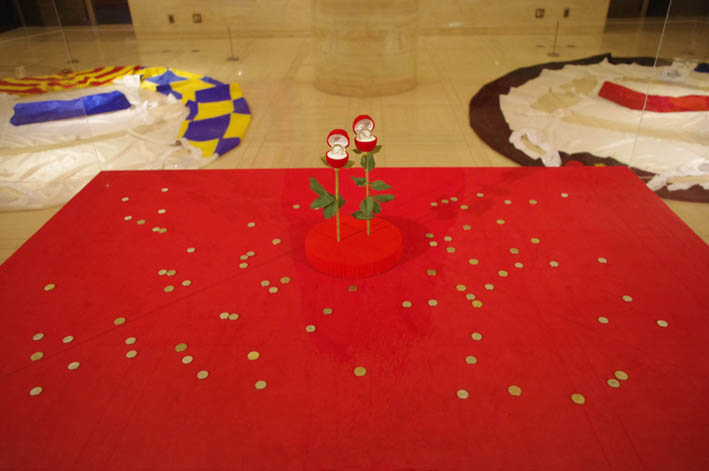 |
|||
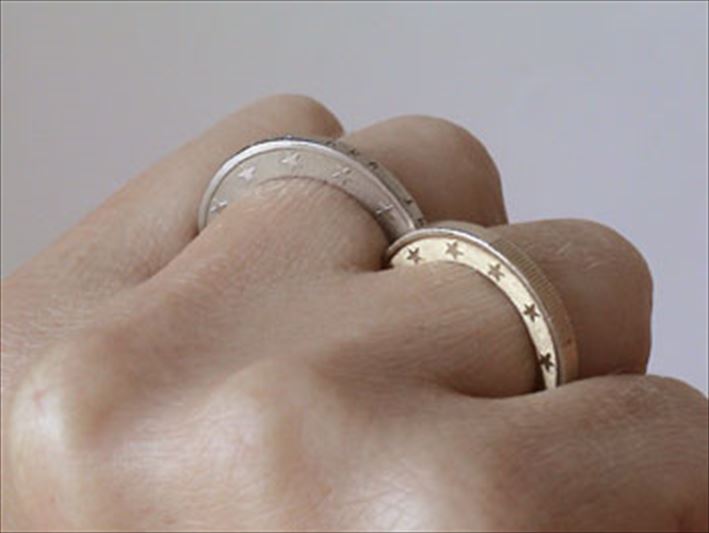 |
|||
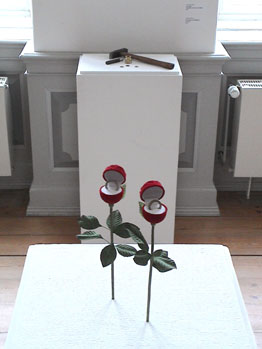 |
r#104 Euro Ring /Euro Ring Making Kit Euro Coin, Carpenter’s Hammer, Center Punch, File, Ring Display Stands ユーロ硬貨、金槌、ポンチ、ヤスリ、コインスタンド 2002 「Simple Beeds and Cultured Sees」 Castle Plueschow, Germany Collaborating Artists: Kimmo Heikkila (Lappeenranta, Finnland), Tuija Helena Markonsalo (Helsinki, Finnland) auch bei Kontakt-Raume.Junger Schmuck, Ines Tartler, Anja Knecht (Berlin, Deutschland), Okamoto Mitsuhiro (Kyoto, Japan) und Susan Pietzsch (Glashagen, Deutschland). ドイツ・プルショー城での現代美術作家と 現代ジュエリー作家とのコラボレーション 「Simple Beeds and Cultured Sees」展 での展示風景 |
||
| “Euro Ring” have been exhibited around Germany in Europe, and audiences constantly have had controversial subjects, “It is art.” or “It is crime.”. In this work, euro coins, which belong to audiences are divided into center parts and ring-shaped parts, then centers are confiscated from them and the remaining coins are returned to the same audiences as their rings. Euro coins have common sides and national sides. The national sides indicate issuing country. (For example, the obverse of the German euro coin depicts an interpretation of the German eagle, symbol of sovereignty.) This work arouses stimulating interest for national identities of audiences in the European Union. “Coffee Break 005 Euro Ring”, Weekly “Shukan Kinyobi” 10th February 2006 ドイツを中心にヨーロッパで展開してきた「Euro Ring」は、発表のたびに「犯罪だ」「アートだ」と議論される。 作品は、観客のユーロ硬貨をハンマーで輪の部分と中央部分に分離し、中央部分は没収し、輪の部分を 指輪として返すというものである。中央部分にはその参加国独自のデザインが施されている (たとえばドイツの場合、国章である「鷲」)。 ユーロという共同体に参加することによって、逆にナショナル・アイデンティティーが立ち現れてくる現象は興味深い。 “珈琲破壊005 Euro Ring” 週刊誌「週刊金曜日」2006年2月10日号より |
|||
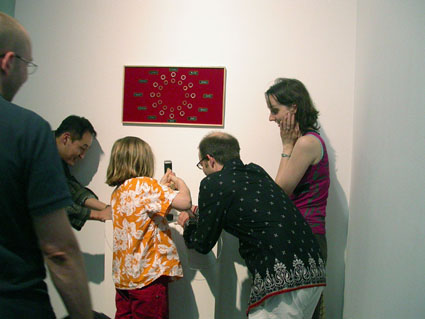 |
r#180 Euro Ring workshop in ZKM June 14, 2007 |
||
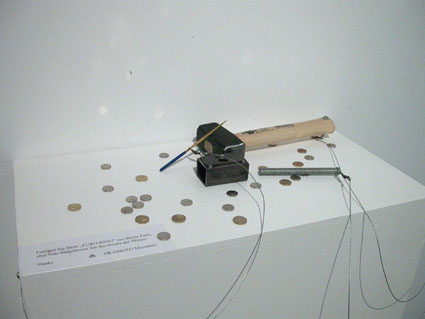 |
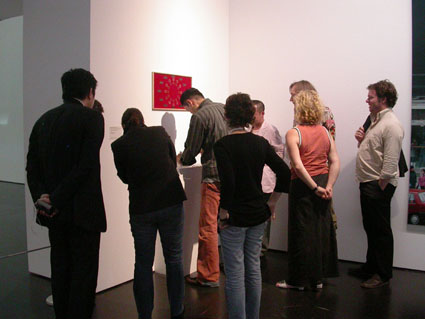 |
||
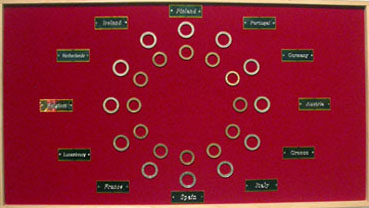 |
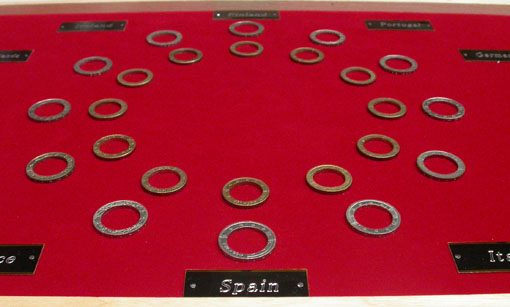 |
||
| r#179 Euro Ring Rings 24 Euro coins with core hole off center 2007 |
|||
.jpg) |
r#307 REDcarpet ウクライナカラーのリングケース、 刺繍、染色生地、パネル (「縫い合わせる」展、r#306 EUROring の台座として) 1960×400×20mm ソ連時代の国旗にあしらわれていた槌鎌(農民と労働者)、 五芒星(共産主義の最終的勝利)を 刺繍した生地を赤色の染料で染めあげた。 |
||